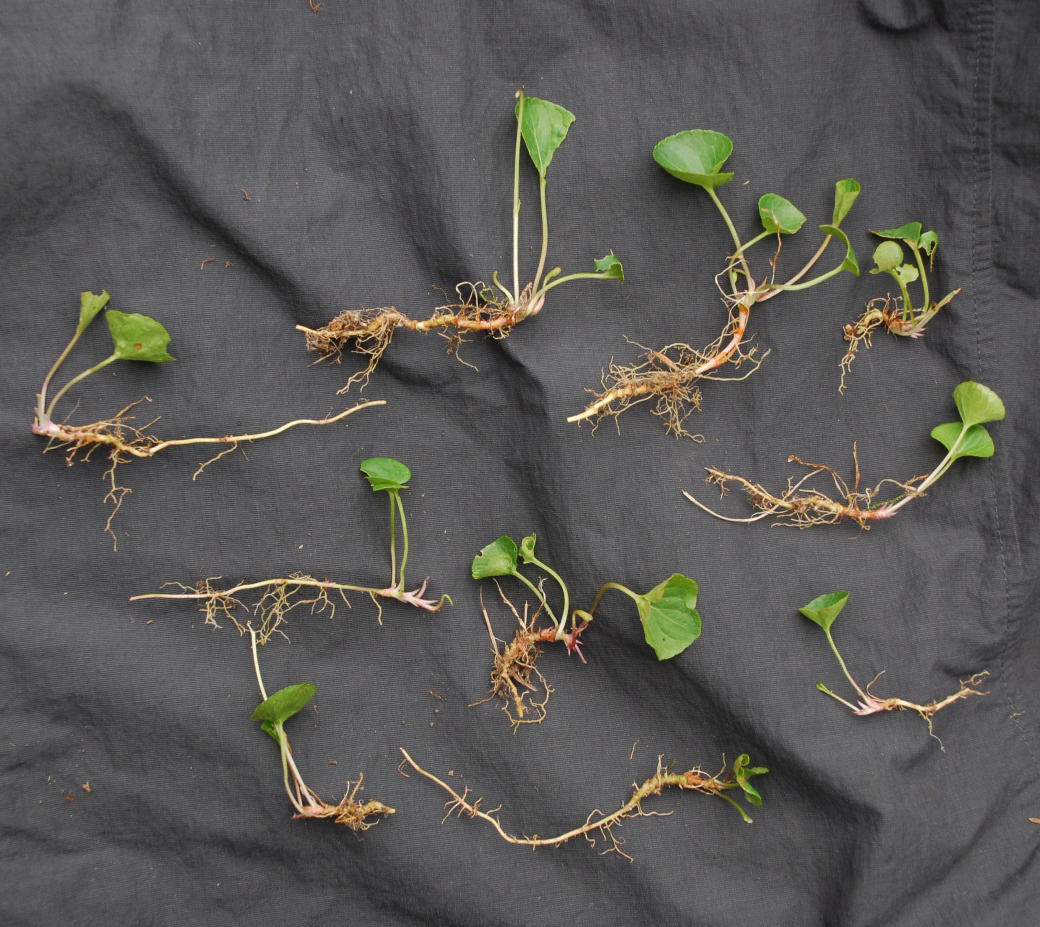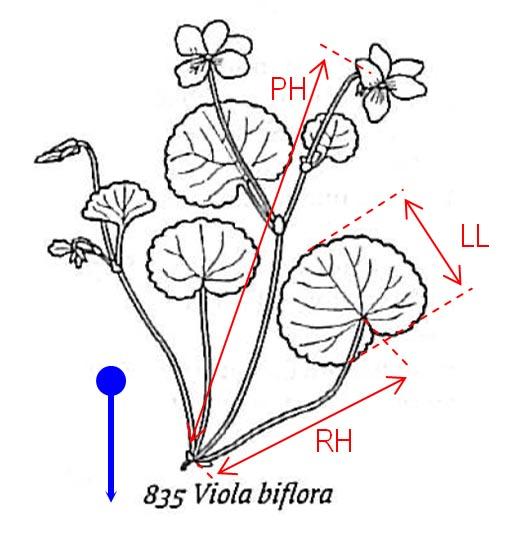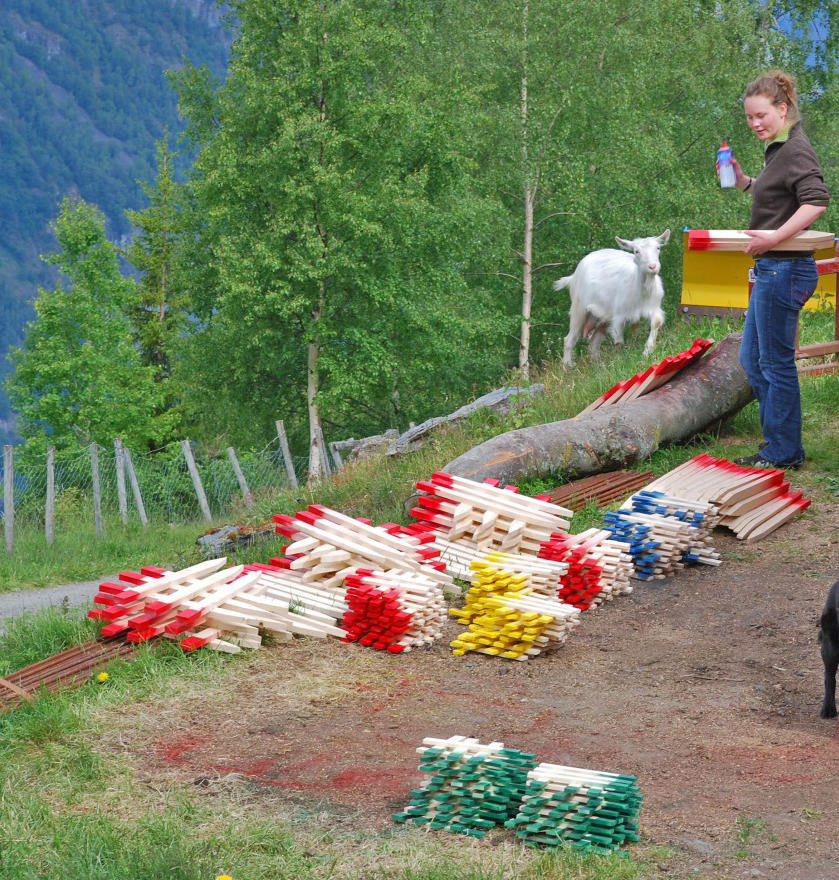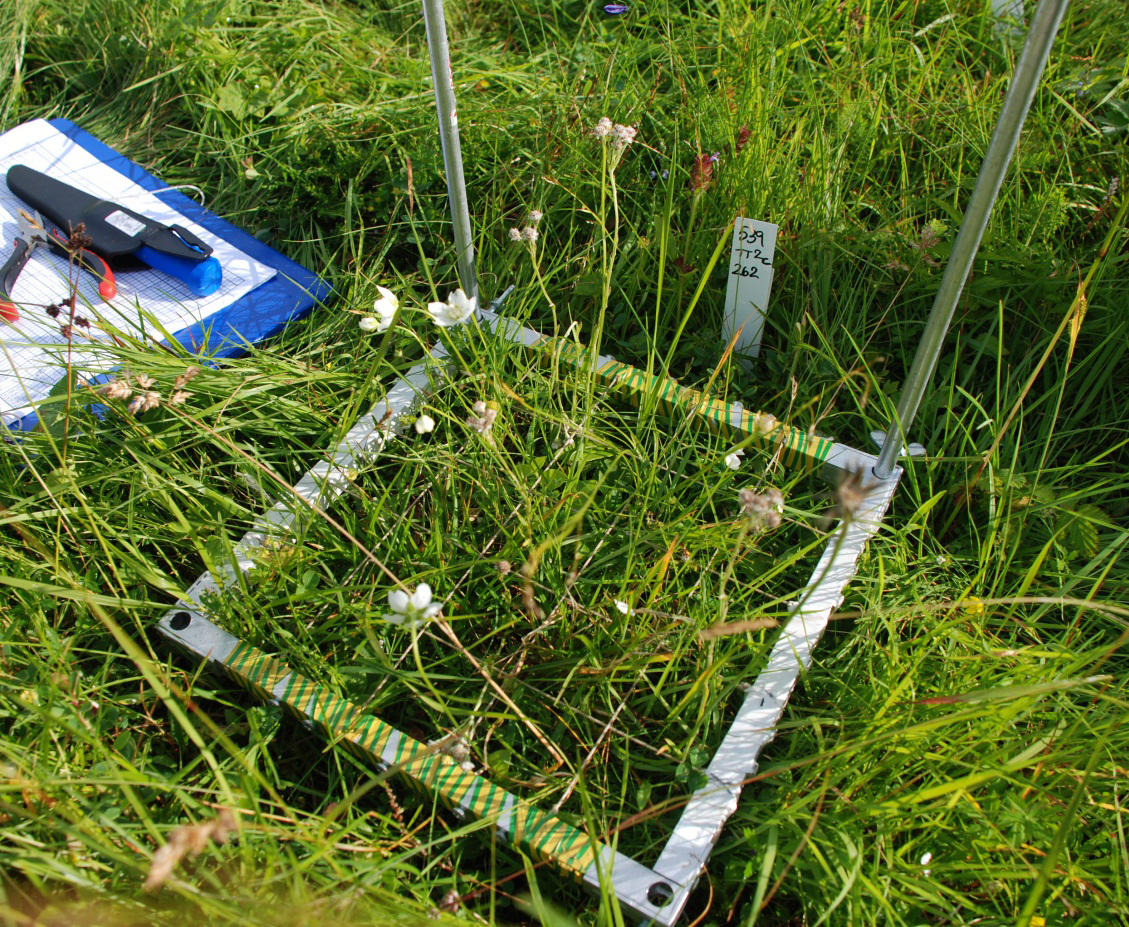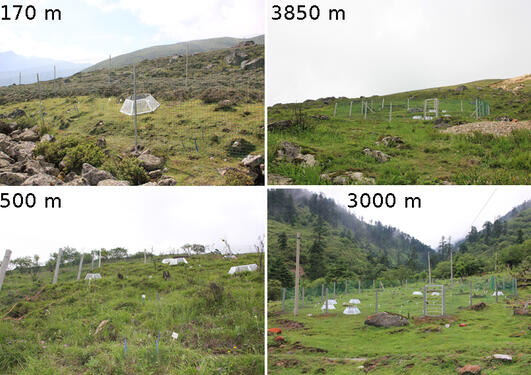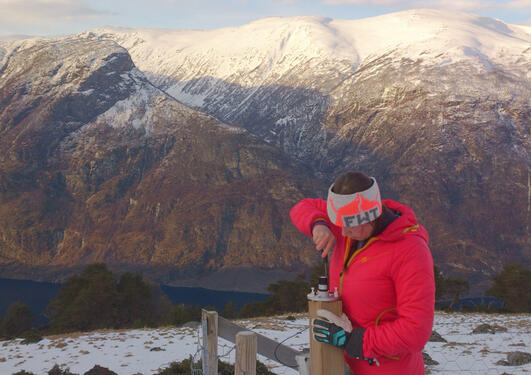SeedClim
The role of seeds in a changing climate - linking germination ecophysiology to population and community ecology

Hovedinnhold
The general objective of SeedClim is to provide a mechanistic understanding of how ongoing and future climate change affects plants at landscape to regional scales. To achieve this we have developed a new methodological framework allowing us to explore how climate-change effects vary along two major climate gradients--temperature and precipitation--and how these effects scale across levels of organisation from individuals via populations to communities.
The western Norwegian fjord landscapes allow us to set up a grid of study sites along independent temperature and precipitation gradients, enabling us to study the unique and combined effects of a warmer and a wetter climate.
Our 12 experimental sites are located in a climate grid where four levels of annual precipitation (600, 1200, 2000 and 2700 mm) are combined with three levels of mean summer temperatures (7.5, 9.5, and 11.5°C) while keeping all other variables as constant as possible. In collaboration with met.no we installed climate stations that record temperature, precipitation, and soil moisture at each site since 2009.
Within the climatic grid, we have transplanted turfs (25 x 25 cm) of intact plant communities from cold and/or dry conditions towards warmer and/or wetter conditions matching the regional climate projections for the future. In these turfs we monitor plant community and population responses, along with one-off measurements of a range of responses, including microbial communities, bryophytes, and seedling recruitment.
We have also transplanted seeds of three species pairs of alpine specialists and lowland generalists in the same manner (Veronica alpina vs. V. officinalis, Viola biflora vs. V. palustris, Carex capillaris vs. C. pallescens) to assess climate impacts on plant resgeneration
Additional experiments
In addition to our main approach, the transplant experiments, we also have other experiments and studies running in the SEEDCLIM GRID:
- A graminoid removal expeiment to assess the impacts of changing competitive interactions on plant community and population-level responses along the climate gradients
- A gap experiment to assess impacts on gap regeneration
- A seedrain and seedbank study
- A seedsowing experiment to assess tree seedling recrutment (collaboration with M. Ohlson, NMBU)
Collaborating Projects
See under Related content below
Project partners
Vigdis Vandvik, UiB, project leader
Kari Klanderud, Norwegian University of Life Sciences (NMBU), community ecology, interactions
Olav Skarpaas, Norwegian Institute for Nature Management (NINA), population ecology, demography and modelling
Deborah Goldberg, University of Michigan (UM), community ecology, resource allocation, microbial communities
Richard Telford UiB, numerical methods, biostatistics
Øyvind Nordli, met.no, climate data monitoring and modelling
Zuzana Münzbergová, Czech Academy of Sciences, population ecology and modelling, genetic analyses
Matt I. Daws, Royal Botanic Gardens, Kew, UK / EWL Sciences, Darwin, Australia, seed ecology
Postdocs
Kari Klanderud, community ecology, interactions (2008-2011)
Pascale Michel, UiB, postdoc, bryophyte community ecology and ecosystem functioning (2012-2014)
Aud Halbritter, UiB, climate change, and pollination, phenology (2014-2019)
TBA, UiB, harnessing experiments for synthesis (2019-)
PhD students:
Eric Meineri, UiB, population biology and distributional modelling (completed 2012)
Joachim Töpper, UiB/ University College of Sogn and Fjordane (HiSF), population biology and seed ecophysiology
Siri Lie Olsen, NMBU, interactions, community and population dynamics
John L. Guittar, UM, plant traits and soil microbiota
Master students:
Tessa Bargmann, Oxford, plant growth and resource allocation (completed 2009)
Christine Pötsch, UiB, plant resource allocation (completed 2009)
Astrid Berge, UiB, seed dispersal and seedling recruitment (completed 2010)
Marta Ramírez Boixaderas, UiB, plant dispersal (completed 2012)
Joris Schwitter, UiB, seed predation along climate gradients (2018)
Collaborators:
Knut Rydgren, HiSF, seed and population ecology and demography
Mikael Ohlson, UMB, treeline dynamics and tree species establishment
Marianne Evju, NINA, population ecology, demography and modelling
Anita Verpe Dyrdal, met.no, climate data monitoring and modelling
Funding source: Norwegian Research council (NFR) NORKLIMA 2008-2012
Publications
Töpper JP, Meineri E, Olsen SL, Rydgren K, Skarpaas O, & Vandvik V. 2018. The devil is in the detail: non-additive and context-dependent plant population responses to increasing temperature and precipitation. Global Change Biology 24: 4657–4666.
Klanderud K, Meineri E, Töpper JP, Michel P, & Vandvik V. 2017. Biotic interaction effects on seedling recruitment along bioclimatic gradients: testing the stress gradient hypothesis. Journal of Vegetation Science 28: 347-356.
Münzbergová Z, Hadincová V, Skálová H, & Vandvik V. 2017. Genetic differentiation and plasticity interact along temperature and precipitation gradients to determine plant performance under climate change. Journal of Ecology 105: 1358–1373. 10.1111/1365-2745.12762
Guittar J, Goldberg DE, Klanderud K, Telford RJ, & Vandvik V. 2016. Can trait patterns along gradients predict plant community responses to climate change? Ecology 97: 2791-2801
Olsen SL, Töpper J, Skarpaas O, Vandvik V, & Klanderud K. 2016. From facilitation to competition: temperature-driven shift in dominant plant interactions affects population dynamics in seminatural grasslands. Global Change Ecology 22: 1915-1926.
Skarpaas O, Meineri E, Bargmann T, Pötsch C, Töpper JP, & Vandvik, V. 2016. Biomass partitioning in grassland plants along independent gradients in temperature and precipitation. Perspectives in Plant Ecology, Evolution and Systematics 19: 1-11.
Vandvik V, Klanderud K, Meineri E, Måren IE, & Töpper JP. 2016. Seed banks are biodiverstiy reservoirs: species-area relationships above versus below ground. Oikos 125: 218-228.
Klanderud K, Vandvik V, & Goldberg DE. 2015. The importance of biotic vs. abiotic drivers of local plant community composition along regional bioclimatic gradients. PLoS ONE 10: e0130205
Meineri E, Skarpås O, Spindelböck JP, Bargmann T, & Vandvik V. 2013.Direct and size‐dependent effects of climate on flowering performance in alpine and lowland herbaceous species. Journal of Vegetation Science 25: 275-278.
Meineri E, Spindelböck JP, & Vandvik V. 2013. Seedling emergence responds to both seed source and recruitment site climates: a climate change experiment combining transplant and gradient approaches. Plant Ecology 214: 607-619.
Meineri E, Skarpås O, & Vandvik V. 2012. Modeling alpine plant distributions at the landscape scale: Do biotic interactions matter? Ecological Modelling 231: 1-10.
Theses
Bargmann T. 2009. How are plants responding to a changing climate? A case study of growth and allocation in Veronica alpina, Viola biflora, Veronica officinalis and Viola palustris in western Norway. Master thesis, Oxford University
Berge A. 2010. Seedbank, seedrain and seedling recruitment along climate gradients in southern Norway. Master thesis, University of Bergen
Pötsch C. 2010. Resource allocation in two selected Carex species along climate gradients. Master thesis, University of Bergen
Meineri E. 2011. Assessing and comparing climatic control on distribution and reproduction of alpine and lowland species in the subalpine habitat of western Norway. PhD thesis, University of Bergen
Ramírez Boixaderas M. 2012.Plant dispersal in a changing climate: A seed-rain study along climate gradients in Southern Norway. University of Bergen
Olsen SL. 2014. Climate change and biotic interactions in plant communities: effects on plant recruitment and growth, population dynamics and community properties (Klimaendringer og samspillet mellon arter i plantesamfunn: effekter på rekruttering og plantevekst, populasjonsdynamikk og samfunnsegenskaper). PhD thesis, Norwegian University of Life Sciences.
Töpper JP. 2015. Predicting and assessing climate-change impacts on the population dynamics of alpine and lowland forbs. PhD thesis, University of Bergen
Reports
Halbritter, A. and Michel, P (eds) and the SeedClim team (2015) Klimaendringer i din bakgåd. University of Bergen, Bergen, 68 pp.

